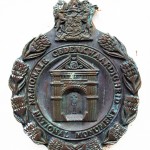Springfield is one of the oldest farms in the Strandveld and was established in 1742 as one farm together with Rhenosterkop. It became a separate farm in 1747 when the Van Breda family became the new owners. Their farm manager, Swart, built the dry limestone walls traversing the landscape and the dunes to prevent their sheep from escaping the farm to the sea. Known for some reason as “slave walls”, they are a prominent feature on the Zoetenysberg mountains behind Springfield. In 1751 Springfield became the property of a German immigrant in the Strandveld, who married a Swart lady from Gansbaai and later became field cornet in charge of the area. 
The original farm house predates 1889 when the farm was formally registered. It was a T-shape building, built of local unplastered stone typical of the Strandveld. There used to be a wooden staircase in the centre room, giving access to an attic. The window frame of one room on the ground floor is inscribed 19.6.99 which probably refers to 1899.
By 1889 the farm was formally surveyed and registered. Robert Durrant bought the farm in 1978. The historic Springfield Farm and national monument, established in 1978 by the then new owner Robert and Diana Durrant. Robert Farmed the land and Diana is well known for her naive art paintings of the local flora. This room was used as a school for the children of the farms Rhenosterkop, Aasfontein and Brandfontein. These children boarded on the farm. Until the 1930s the only water available came from two springs on the farm,giving the farm its name.
Lord de Saumarez altered the main house by changing it into a double story homestead in the style of an English baronial hall with hammer beams and a minstrel’s gallery in the 1950’s and adding on more room at the back. The old oven in the kitchen was removed to make way for two new kitchen areas. He restored an old 19th century cottage and built a manager’s house incorporating another 19th century building. Other buildings on the farmstead include an outbuilding with stables. The architect responsible for the changes was Brian Mansergh, partner of FK Kendall, the architect responsible for the early restoration of Groot Constantia. The original barn and attached rooms dating back to the middle 1700 still stands today.
